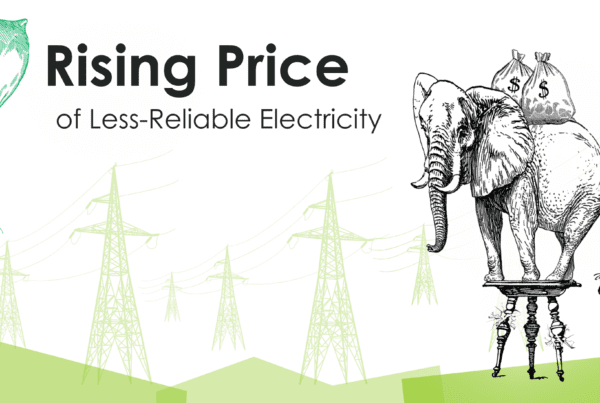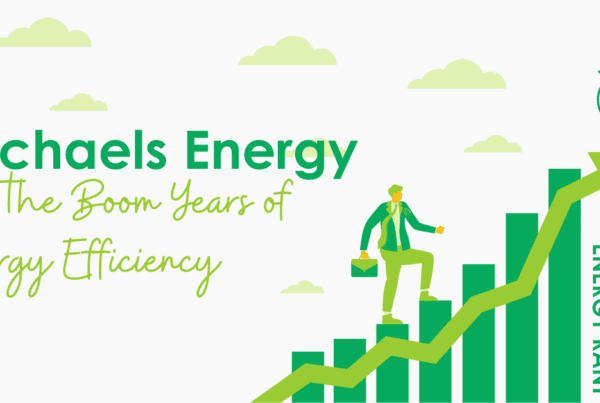How many times have you read “we can create 40 million jobs and reduce our energy consumption by 90% if only we did x, y, and z.” Lester in this article says by 2035 we can double our fuel economy. Well I should hope so! Lester is actually one guy that is conservative in his estimates/goals. David Goldstein in the same article says we can decrease our energy consumption by 88% by 2050. Now where does he or any other egghead come up with these numbers?
I had to laugh out loud regarding the results of an energy efficiency potential study I studied a couple years back. This expensive study was to be used for energy efficiency program planning for the subsequent five years for a state which shall remain anonymous to protect guilt. For commercial and industrial (C&I) programs, imagine a graph with two sets of data on it. The bars represent the programs’ goals for the trailing and forward-looking five years each, and a line represents achieved savings over the trailing five years. For the trailing five years the savings ran about double the goals, increasing a little each year – something like 5% per year. Well guess what the goals were going forward – about double where they were at the time increasing about 5% a year. Stupendously genius! If I failed to explain clearly, the goals were just an extension of the past 5 years. You could lay a ruler over the past five years’ points and draw a straight line to get the goals going forward. Man, I wonder how much they were paid for that report. At least a half million dollars, I’m sure.
Soothsayers who predict energy savings potential two-three decades out or more must subscribe to the same methodology, otherwise how can you possibly project what the savings potential is beyond ten years. Engineers, good ones anyway, subscribe to a rule that says extrapolating data beyond the data set – into the future in this case – is very dangerous. The further out one gets, the huger the error.
I am confident that the world’s economies will become more efficient with time, if for no other reason, less energy consumption means more profit. However, the savings curve over time may approach a limit of something like 20%-30% savings compared to today because there is a severe shortage of professionals with degrees in the physical sciences, e.g. engineering, who are knowledgeable regarding C&I energy-using systems and savings potential.
Here is an article that includes 10 ways to improve the energy efficiency of a commercial building. As I read this typical list, I can tell the author most likely doesn’t know squat about outing real energy-saving opportunities in C&I facilities. Do energy audits, use more efficient equipment (duh!), maintain equipment efficiency (duh!), insulate, and brainwash occupants. These things can save substantial energy if the lights are on 24/7 and the chiller was made in the 1960s and it’s plugged with airborne fuzz including dandelion seeds and the like. This list reads like a good set of tips for homes.
Where are the real savings? In system design and control. Heating sources have been approaching 100% efficiency for a long time. It is also going to be difficult to cost-effectively produce chillers that are much more efficient than you can get on the market today. You’ve got to pump water, move air, control temperature and humidity, and provide ventilation. Until humans create artificial intelligence to control systems, these things always waste substantial energy regardless of how efficient, well maintained, how many audits you do, or how “aware” of energy your people are.
Then there are manufacturing facilities, some of which I swear were built by the seat of somebody’s pants and controlled by no one. Compressors are running at pressures higher than they need to be. Cooling water and heating water streams are mixed before a portion goes to a cooling tower and the other portion goes to a heat exchanger. Pumps and fans are grotesquely oversized. Equipment is controlled in series rather than parallel. Chilled water is used to cool things to 110F. Operators’ fault? Maybe not. These facilities operate for profit, and productivity including simply keeping the line going, is king. Staff in these facilities run from one fire to the next.
I don’t know if I have ever seen “green jobs” and “engineer” in the same article. Green jobs always seem to refer to people who weatherize homes or work at a wind turbine, electric vehicle battery, photovoltaic, or some type of renewable energy plant. This is fine by me as I really don’t want that moniker. However, this is symptomatic that at least 50% of energy consumption in all buildings is misunderstood at best and virtually out of control at worst.
Rather than or maybe in addition to job training for the green economy, how about some electives or advanced degrees even for engineering schools? Six credits of electives or a masters degree in energy efficiency would go a ways. It wouldn’t take me long to generate a high level curriculum. Rather than throwing hundreds of billions at technologies and industries that are bad ideas (e.g., food-generated ethanol), how about investing in some smart people who can critically analyze and provide solutions to greatly reduce energy consumption COST EFFECTIVELY WITH NO TAXPAYER SUBSIDIES?!
Tidbits
Here is an all-to-familiar story of misguided priorities. BWI Airport is spending $21 million on an energy savings performance contract and they are leading off with the installation of a bunch of solar panels. Meanwhile, they are probably wasting energy as though they want to get their “fair share”. I also just came off a conversation where a former science teacher at a school district is pressing for a remote, net-metered wind turbine – and they want the utility to pay for it. Uhuh. Another LOL moment. They’ve done a grand total of zilch to optimize their facilities’ energy consumption as well.




